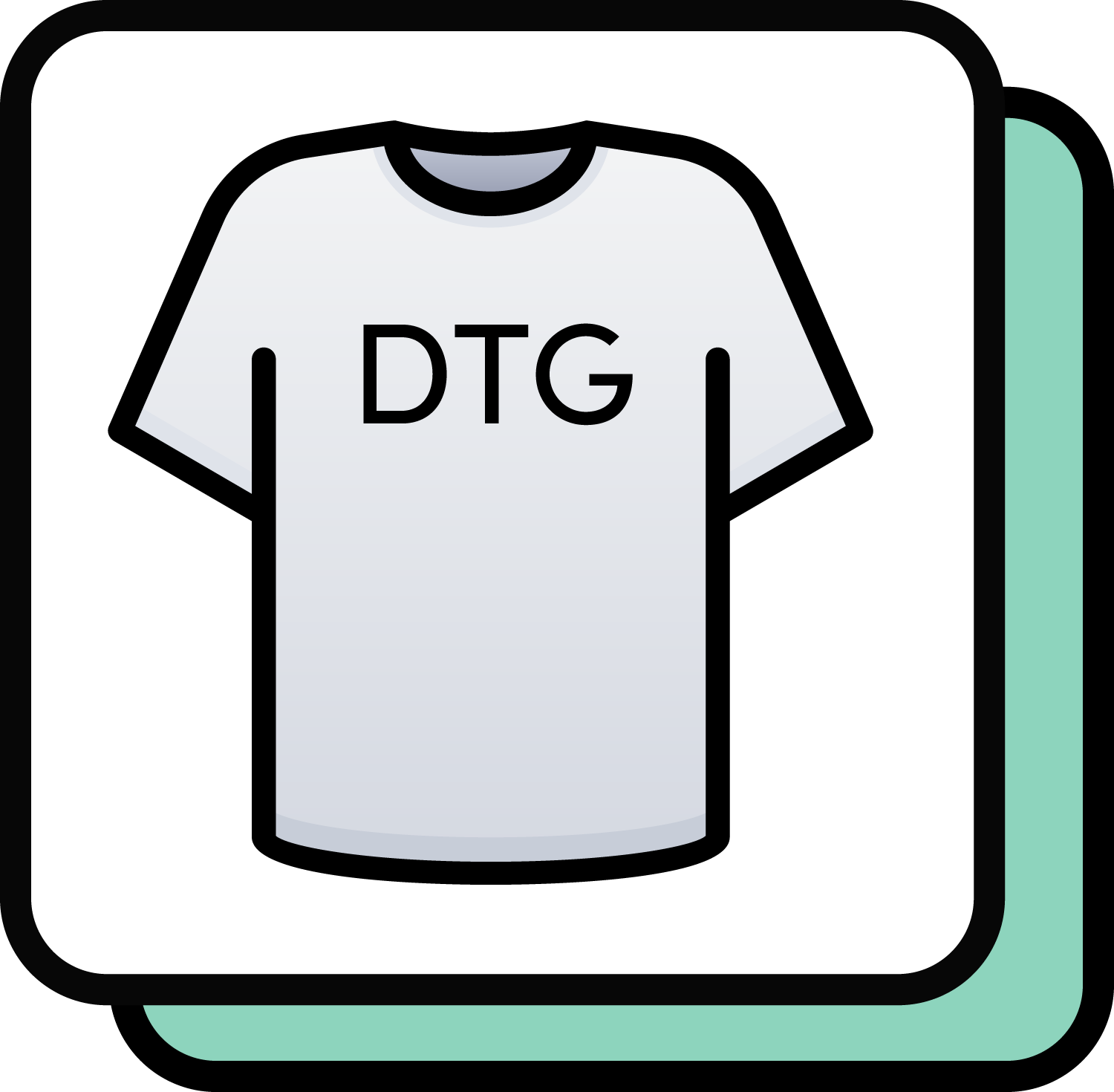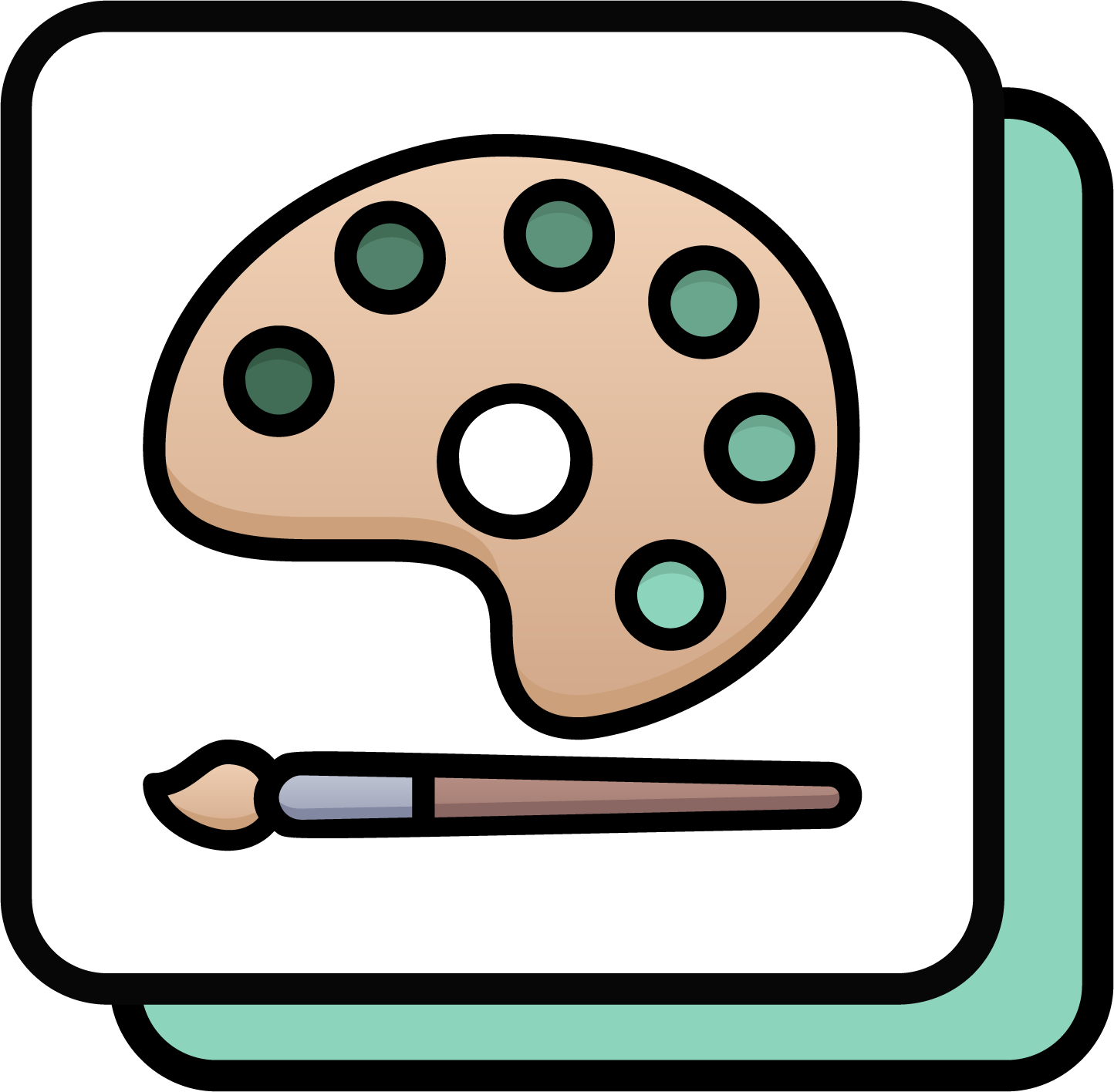DIRECT PRINTING ON TEXTILE (DTG - Direct to garment)

Application
The highest quality and consistency of printing is achieved on fully combed 100% cotton T-shirts. (We recommend choosing Stanley & Stella clothes)
It is also suitable to print on cotton combined with polyester, but then the probability of the risks listed below increases. There is no way to keep a solid print - the more polyester, the more likely the garment will absorb the dye. Also, in case of thick or fluffy (sweater) material, the probability of fluffing and small defects during printing increases. Usually, when using 85% cotton and 15% polyester sweaters, the print is of sufficient quality. When using cheaper jumpers with more polyester, DTG printing can produce poor results.
Choosing cotton-elastane blends or other fabrics increases the risk of cracking or dye absorption. In this case, it is necessary to test the clothes in order to make sure whether this printing technology is suitable for your individually selected material. There is nothing to be upset about - we usually choose other technologies for alternative fabrics.
Advantages
- Small details can be printed.
-
Wide variety of colors and transitions can be achieved. Possible to print photos
- Simple to produce small amounts (from 1 unit)
- Print surface has a comfortable touch feeling (no sticker effect)
- Short production durations.
- Vector files not needed (.png is preferred).
- When correctly taken care of the garment can be long lasting.
- Printing surface up to 39x59 cm.
Disadvantages:
- Hard to achieve a bright white color on lower quality garments.
- Clothes may have some temporary stains from using pre-treatment liquid and heat press, can be slightly sticky (after washing disappears or remains barely visible)
-
Can be expensive to print large and dense bright prints.
- During printing, there is fluff that comes out, so there may be small defects in the print.

File requirements
A high-quality .png file without a background is required for production. RGB color mode is required.
The picture must correspond to real dimensions and 300DPI resolution. Normally, printing works best with a file size of at least 3500x3500px.
In order to obtain perfectly matching colors, please order test production or select colors in the printing file according to our printed palette. Each device prints differently, so we cannot guarantee that the image will match the one seen on the computer screen.
Printing process
Unlike most printing methods, direct printing does not require a lot of advance preparation. Individual orders can be made in a very short time. Unfortunately, the production process of this technology is extremely precise and consists of many steps, on which the quality of the print depends..
-
Lint is removed from the garment and it is ironed with the help of a heat press.
-
The finished garment is placed in a machine, where it is sprayed with pre-treatment. A pre-treatment is a special liquid that helps the printing ink adhere to the surface of the garment. Without primer, the clothes would simply absorb all the dye. The type and amount of primer is selected according to the garment.
-
The pre-treated garment is transferred to a heat press and pressed for 30-60 seconds at a temperature of 140-170°C. The temperature, time and compression strength are selected individually according to the material and color of the clothes. The primed and heated surface of the garment becomes even, shiny and free of protruding fluff.
-
The print size and position is chosen accordingly to the mockup and the garment is placed onto the DTG printer. A suitable table is chosen and a garment is put on.
-
In the printer program, the print mode, number of layers, color intensity and other additional functions are selected.
-
The print command is run and intermediate results are monitored. How well the surface will be covered depends on the accuracy of priming and the quality of the material. In some cases, identically prepared garments of the same model may cover differently. It happens because clothes of the same model are produced at different times and have an imperceptible difference in material. Therefore, it is our responsibility to make the final result as similar as possible and, if necessary, to produce further garments by choosing a larger amount of ink or pre-treatment. During the pauses between layers, you can see if an additional layer of paint is needed. Sometimes it is possible to solve the lack of ink and save the garment by printing an additional layer.
-
Unforeseen problems also occur during printing. Sometimes lint appears in the press area, which leaves small imperfections after further pressing. We also encounter unforeseen disturbances - malfunctions of the program, computer when jobs get stuck in the middle of printing or printing is not done where it was set. There are times when the garment rises due to a large amount of dye and further printing has to be done by lowering the table below. Accordingly, when printing from a greater distance, the print details are less sharp and have more blurring. These and other various factors influence the final result of the print. We try to avoid mistakes and admit when they happen, but there are also factors beyond our control.
-
After printing on the garment, it is again moved to the heat press. A protective paper is placed over the paint and the garment is re-pressed. Just like after priming, during pressing, the optimum degree of compression, temperature and time are selected. We select these settings by individually evaluating the print, the amount of ink and the material of the garment itself. After pressing, we remove the protective paper and evaluate the print. Unfortunately, problems also occur during this final step - the protective paper may move when pressed and the print can be damaged. Sometimes after removing the paper we see cracks in the print or heavily absorbed ink.
-
We steam the printed garment with a special iron to reduce pre-treatment and pressing marks and send it to packaging.
